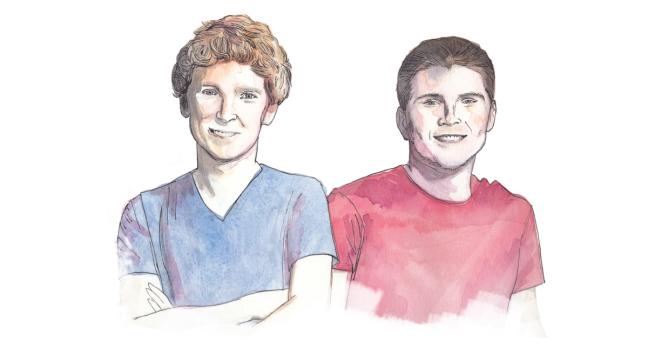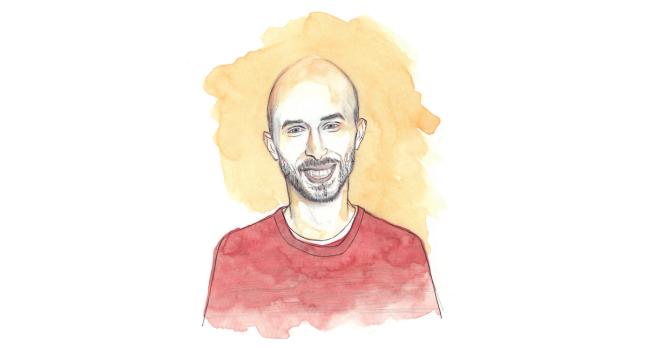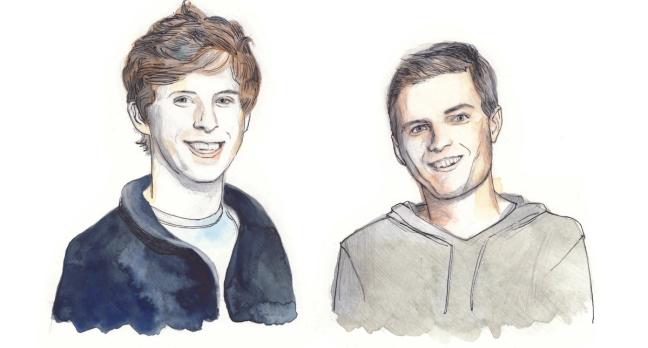
Words: Kojo Abudu
The internet age has produced a generation of tech-savvy young men who have made huge fortunes by combining great ideas with technical know-how and business acumen. So what can we learn from the geeks who took over the world?

American entrepreneur James Beshara began to raise eyebrows after graduating magna cum laude from Wake Forest University, where he studied International Development and Policy. Shortly after graduating, Beshara went to South Africa to work as a microloans collection officer. It was during this time that he learnt about the idea of ‘social collateral’, which led him to develop dvelo.org – a website that provided group-funded loans to developing countries.
However, Beshara soon began to notice that users were using the site for purposes other than charity- related causes. Beshara returned to America and met Khaled Hussein to work on a new venture, Tilt – the successor to dvelo.org that would earn Beshara millions. Tilt, unlike other crowdfunding websites, allows any group of any size to pool funds to reach any common goal.
Waldron is the mind behind Zynga – the company considered to be the pioneer of the social gaming industry.
Waldron grew up in Watertown, Connecticut and began programming video games at the age of 11, shortly after receiving his first computer. Just like fellow tech mogul Mark Zuckerberg, Waldron spent most of his free time as a child hacking AOL.
While in high school, Waldron actually decrypted Burger King’s coupon code algorithm and created a website that created unlimited sandwich coupons for visitors. Luckily, Waldron put his skills to good use by enrolling at the University of Connecticut but soon dropped out to launch Zynga. Within four years of its founding, Zynga had grown to be worth $1 billion and in 2011 held the largest IPO since Google. Waldron left Zynga in 2013 and has since become an active angel investor and advisor for several budding tech companies.

Patrick and John Collison are the brains behind Stripe – the billion-dollar startup that allows companies to process payments in 100 global currencies but with only a few lines of code.
The brothers hail from Ireland and now reside in San Francisco. Both Collison brothers showed off their exemplary intellectual talents from a young age and were admitted into the world’s best universities, but that still wasn’t enough, the result being that Patrick and John dropped out of MIT and Harvard respectively. Being entrepreneurs at heart, the brothers took a huge risk and left those prestigious seats of learning to pursue their dreams.
Lucky for them, this dream led them to amass a huge fortune. Stripe from its early days has been backed by a group of the globe’s biggest companies including Sony, Visa and American Express. Maybe dropping out of college isn’t such a bad idea after all?
After selling his idea to Yahoo for $30 million, D’Aloisio became one of the world’s youngest ever self-made millionaires. His valuable creation, Summly, is an app that summarises the news using artificial intelligence technology. D’Aloisio’s achievements did not go unnoticed as he was named ‘one of the world’s most influential teenagers’ by Time Magazine and ‘Inventor of the Year’ in New York City by The Wall Street Journal.
The entrepreneurial youngster grew up in London, attended King’s College, Wimbledon and was recently admitted into Oxford University to study computer science and philosophy. D’Aloisio also works as a product manager at Yahoo News Digest on the side. So it’s fair to say he doesn’t quite fit the stereotype of a clueless, broke student…
In 2012, Swedish native Carl Waldekranz co-founded Tictail – the e-commerce giant that links mainstream shoppers to emerging designers all around the world by giving them the tools to build an online shop.
By creating a DIY e-commerce platform for independent brands to set up a virtual store in minutes, Waldekranz is on track to fulfil his goal of democratising e-commerce. Tictail has been named one of ‘Europe’s hottest 100 start-ups’ and has received $32 million in funding from major investors in the tech world.
The successful Swede has just adopted New York City as his new home as he recently opened Tictail’s first store in the East Village neighbourhood. Waldekranz once said, ‘people spend too much time discussing their idea and thinking about the right timing.’ He now concludes, ‘just do it.’

Evan Spiegel is the mind behind Snapchat, which has been responsible for making him the youngest billionaire in the world.
Wealth isn’t very new to this tech entrepreneur though. Spiegel grew up in Los Angeles with two parents as lawyers. After being educated at the Crossroads School of Arts and Science, Spiegel was admitted into Stanford University where he studied product design. While at Stanford, Spiegel joined a fraternity where he would meet his future Snapchat co-founder, Bobby Murphy. Spiegel worked on several projects during his time at Stanford but none of them managed to take off.
However, Spiegel didn’t give up. Rather, he learned from his experiences and left Stanford before completing his degree to further develop his ideas. Luckily, Spiegel was able to launch Snapchat, which initially drew attention among younger social media users and eventually grew into a billion-dollar company. Something to take away from Spiegel is that “there is real value in sharing moments that don’t live forever.”
One of the youngest entrepreneurs on the list, Proud has successfully raised millions to fund his start-up, Hello Inc., which creates a device that allows people to sleep better.
The device is called the Sense sleep tracker and it monitors room conditions while one sleeps in order to inform them of their sleeping habits. Proud showed signs of creative genius early on in life. At the age of 9, he learned how to use HTML and at the age of 12, he was already building professional websites.
Although Proud had always imagined going to university, he decided to take on a non-traditional path by joining Peter Thiel’s fellowship in 2011 – a programme that gives young and promising entrepreneurs $100,00 to develop their own business ideas. Much of Proud’s success can be owed to sticking to certain business principles. For example, Proud once said, ‘Technology is most valuable when you don’t have to think about it… That’s when it becomes magical.’

Schaaf came from humble beginnings as a native of Granville, Ohio, where he would attend Ohio University to study computer science. The tech wiz says he came up with Imgur during a boring two-hour lecture.
Initially, the multimillion-dollar idea was something he was doing to ‘pass the time’. Little did Schaaf know that the simple image sharing website that he started would grow to become the largest democratised image sharing community in the world.
Imgur boasts more than 150 million users and ranks among the top 50 sites in the world. If there’s anything we can learn from Schaaf, it is that everyone can be a little more productive with his or her free time.
O’Neill is the man behind Thread – an online personal styling service that makes it easier for men to dress better.
So far, O’Neill has raised $8million to fund his novel idea. Thread sets itself apart by merging the human touch of personal styling with carefully crafted algorithms that optimise the customer’s preferences. The London-based entrepreneur developed the idea by trying to target increasingly stylish yet busy and shopping-averse men.
As O’Neill said, “Most guys want to look good, but don’t like the hassle involved.” What we can take away from O’Neill is that one can easily capitalise on improving society’s smallest inconveniences.

Droll co-founded Yik Yak with Buffington in 2013 after graduating. The pair started to collaborate when they both took a coding class that focused on developing apps for iPhones. Soon after graduating from Furman, Droll and Buffington put their planned career paths on hold and developed Yik Yak full-time.
The pair released the app later that year and it soon became one of the most downloaded apps in the US. Droll and Buffington owe much of their success to realising the need for a locally based platform that allows people to voice their honest opinions.
This article is taken from the July/August issue of Gentleman’s Journal. Subscribe here.

Become a Gentleman’s Journal Member?
Like the Gentleman’s Journal? Why not join the Clubhouse, a special kind of private club where members receive offers and experiences from hand-picked, premium brands. You will also receive invites to exclusive events, the quarterly print magazine delivered directly to your door and your own membership card.



